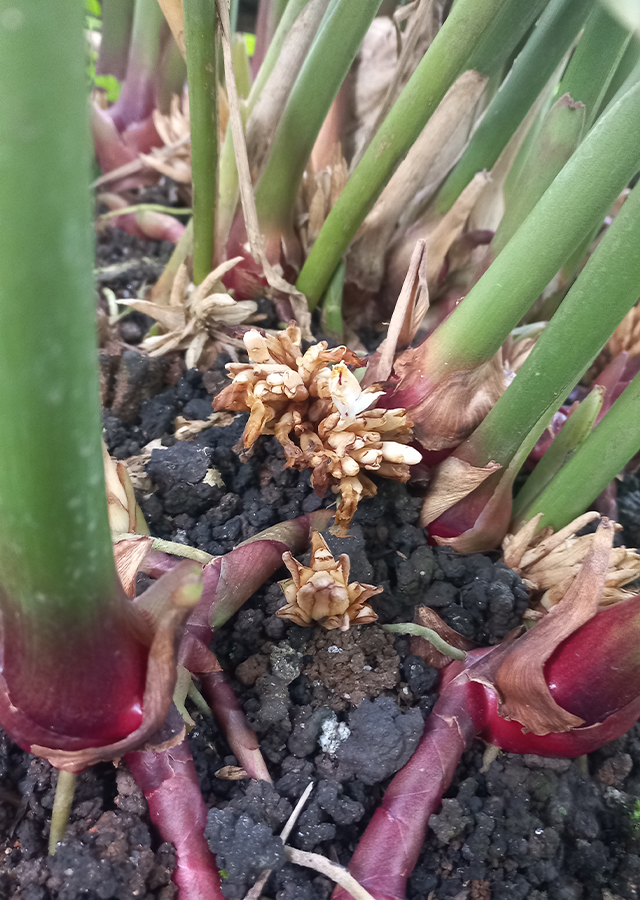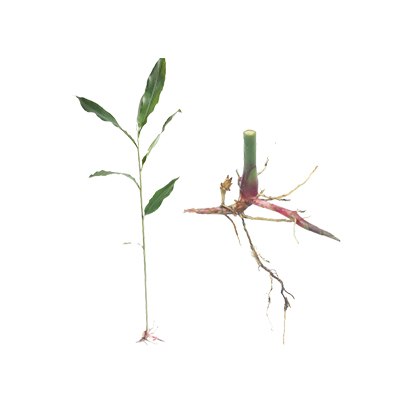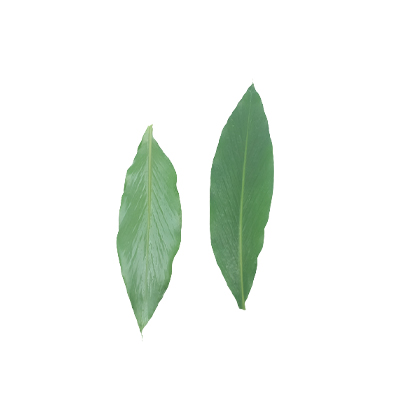Java Cardamom
Amomum dealbatum Roxb.
Zingiberaceae
Location in our garden
Principal



Synonym
Cardamomum dealbatum (Roxb.) Kuntze
Habitus
Herbaceous. A robust perennial herb, growing up to 3 metres tall.
Part Used
Leaves
Rhizome
Growing Requirements
Need Shade
Habitat
Forest
Overview
Native to Assam, Bangladesh, China South-Central, East Himalaya, Laos, Myanmar, Nepal, Thailand, and Vietnam. The plant is sometimes gathered from the wild for its edible fruits and young shoots. The fruits are eaten raw, cooked or candied. The fresh, sweet, juicy aril around ripe seeds is considered a delicacy. Young shoots, young inflorescences and young fruits are eaten as vegetables cooked with rice. It assessed as 'Data Deficient' in the IUCN Red List of Threatened Species (2013)
Vernacular Names
Chang guo sha ren (Chinese), Chelumpa (India).
Agroecology
Scattered in forests, especially on moist humus-rich soils. Grows in shady forests and hill slopes in south-west China at elevations of 600-800 metres.
Morphology
- Rhizome - thick.
- Leaves - ellipic-lanceolate, 50-100 cm × 10-18 cm, fragrant when bruised.
- Fruit - berry-like, crowded in spiciform racemes, ovoid to ovoid-oblong, 3-5 cm × 2-3 cm, fleshy, with 7-11 prominent ribs, greenish.
- Seeds - ovoid-globose, up to 5 mm × 3 mm, blackish-brown, almost entirely enclosed by a greyish-white, juicy, pulpy aril.
Cultivation
Generative propagation is by seed, and vegetative propagation is by cuttings of the root-bearing tips of the rhizome.
Chemical Constituents
Flavonoids, terpenoids, alkaloids, steroids, tannins, and saponins.
Traditional Medicinal Uses
- In Indonesia, traditionally, leaves or rhizomes decoction is used as antiseptic by postpartum women to clean feminine area, and to treat rheumatism and arthritis.
- In India, rhizomes is used to treat arthritis and abscess.
- In Philippines, rhizomes decoction is used in the treatment of cough, and leaves decoction is to treat diarrhea.
Part Used
Reference Sources
- Fern, Ken. (2021). Useful Tropical Plants Database: Amomum dealbatum. https://tropical.theferns.info/viewtropical.php?id=Amomum+dealbatum. 25-11-2021.
- Hanifa, N.I., et al. (2021). Phytochemical Screening of Decoction and Ethanolic Extract of Amomum dealbatum Roxb. Leaves. Jurnal Biologi Tropis, 21 (2): 510 – 518 DOI: http://dx.doi.org/10.29303/jbt.v21i2.2758J.
- Jansen, P.C.M., Jukema, J., Oyen, L.P.A., and Van Lingen, T.V.A. (2016). Amomum dealbatum (PROSEA). https://uses.plantnet-project.org/en/Amomum_dealbatum_(PROSEA). 25-11-2021.
- Kew Royal Botanic Gardens (2017). Plants of the World Online: Amomum dealbatum Roxb. https://powo.science.kew.org/taxon/urn:lsid:ipni.org:names:795498-1. 25-11-2021.
- Medicinal And AromaticPlants. (2013). Amomum dealbatum Roxb. http://thinkinglaymen.org.in/plant_details.php?id=71. 25-11-2021.

